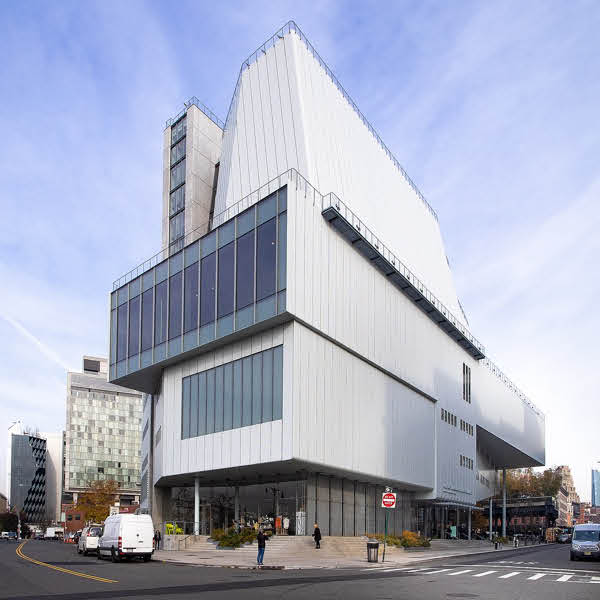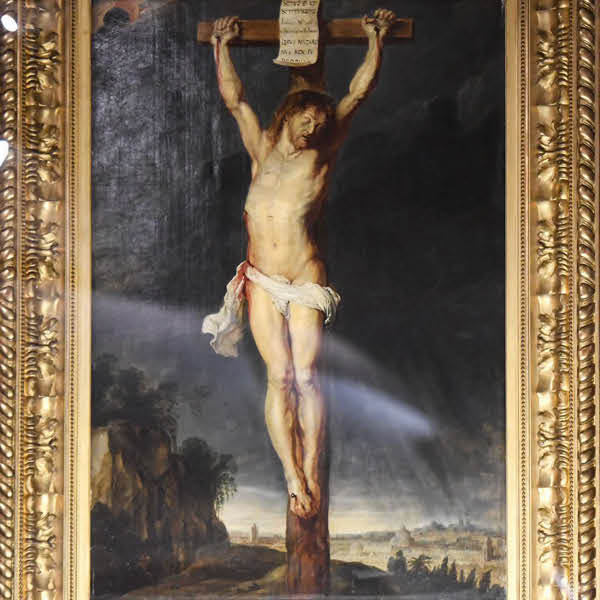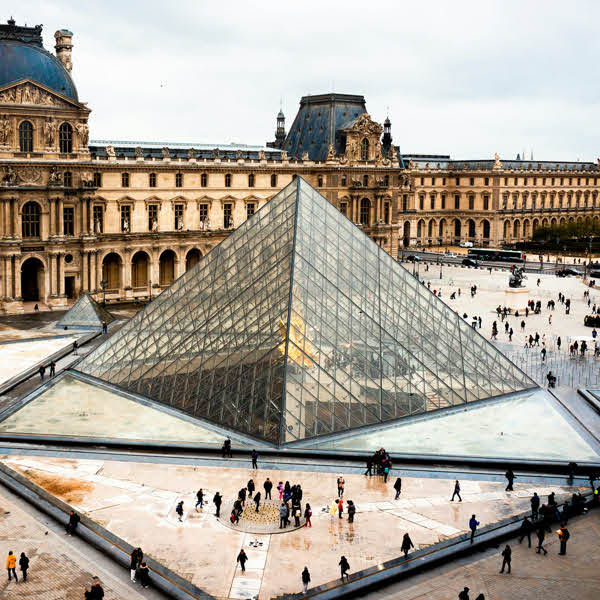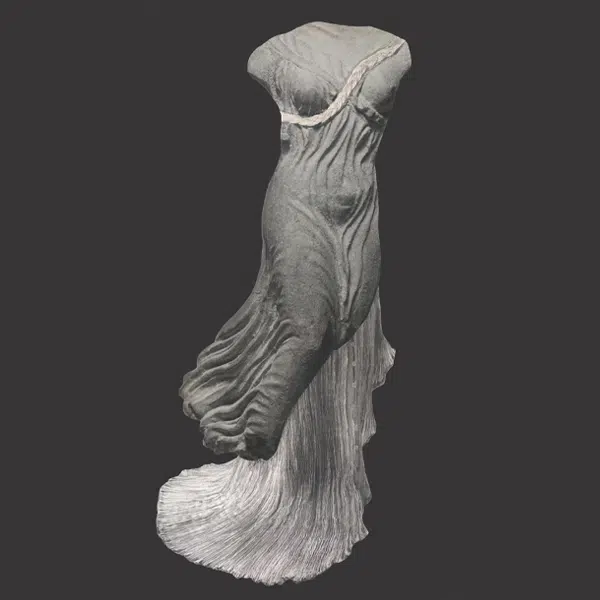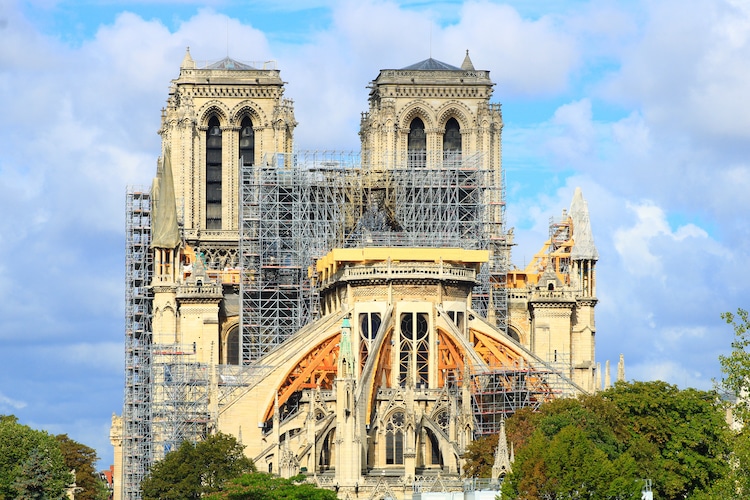
Notre-Dame Cathedral in September 2019 (Stock Photos from GiulianiBruno/Shutterstock)
On April 15, 2019, a serious fire devastated Paris' world-famous Notre-Dame Cathedral. Just hours after the blaze broke out, some of the destruction was already clear; as the fire rapidly spread, it consumed much of the Medieval building’s lead and oak roof, a large portion of the cathedral’s wooden rib-vaulted ceiling, some stained glass windows, and, most dramatically, the building’s 750-ton spire.
In the days and weeks following the fire, more news continued to trickle in. Two days after the fire, we learned that the building’s iconic rose windows, famous gargoyles, and most priceless relics were spared, and, in May, it was announced that the French Senate had passed a bill stipulating that Notre-Dame must be rebuilt exactly as it was. Over the summer, however, little new information has surfaced, leading many to wonder what the cathedral's current state is.
In order to give you a glimpse into Notre-Dame Cathedral five months after the fire, we've compiled list of what we've learned so far. From news of potentially poisonous pollution to briefings on the church's resident bees, we hope to shed some light on some of the story's most interesting updates.
Looking for news out of Notre-Dame? Here's what we know so far, five months after the fire.
What Caused the Notre-Dame Fire
View this post on Instagram
As expected, one of the biggest questions surrounding the fire at Notre-Dame is what exactly sparked it—and whether it was on purpose.
Back in June, Paris prosecutor Remy Heitz revealed that officials do not suspect any criminal intent (a resolution they've maintained). Instead, the focus was on two hypotheses. The first, that the fire started due to a stray cigarette, seems to have since taken the backseat. Now, officials are mostly working under the pretense that the fire was caused by an electrical fault—either within the existing building or as part of the restoration project that was underway at the time of the fire.
In any case, pinpointing the exact place of origin is expected “to be a very long task,” according to expert Richard Marlet, the former head of the scientific police in France.
The Restoration Timeline
View this post on Instagram
Immediately following the fire, the world was left wondering how the French government would fix the famous church. Within just two days of the blaze, however, Prime Minister Édouard Philippe had an answer: France would put out an international call for architects interested in proposing new designs.
News of the Notre-Dame contest spread quickly; within days, architects from around the world were submitting ideas that imagined the Gothic cathedral as an educational greenhouse, a positive energy building, and everything in between. However, in May, the competition saw an abrupt conclusion when a Senate vote dashed President Macron’s dream of “an inventive reconstruction.”
One of Macron's plans that hasn't changed, however, is his goal of repairing the church within five years. In July, the French legislative assembly approved this timeline, which would see the church back to its former glory by the 2024 Summer Olympics.
Lead Contamination
View this post on Instagram
After being given the go-ahead by the government, the restoration project commenced over the summer. In August, however, construction crews were forced to take a three-week break when concerns over contamination surfaced. The culprit? The cathedral's roof and spire, which, collectively, comprised over 400 tons of lead.
Until July, officials maintained that the melted structures did not pose any danger. On July 25, however, authorities abruptly closed two schools, as tests had shown troublesome levels of lead in the areas surrounding the church—and, most alarmingly, within the residents themselves.
According to The Local, tests were carried out on 82 child residents of the Île de la Cité, the central Paris island that is home to Notre-Dame Cathedral. “Ten children had lead levels of between 25-49 microgrammes per litre of blood,” the French newspaper said, “which is considered above the ‘vigilance threshold.' ”
Paris Deputy Mayor Emmanuel Grégoire, however, insists that decontamination efforts—which kicked off in August and lasted until September 10—were simply taken as a precaution. Still, officials are continuing to test areas around the island, with nearby businesses next on the list. In the meantime, construction workers will wear protective suits and take obligatory decontamination showers.
Alternative Spaces
EXCLUSIF. Une “nef temporaire” à côté de Notre-Dame de Paris https://t.co/PZJjE3J7pp pic.twitter.com/hPnIFG3Gcc
— Le JDD (@leJDD) September 7, 2019
Another question among cathedral faithfuls concerns alternative spaces to experience all that Notre-Dame has to offer. As both the official cathedral of the Archdiocese of Paris and, prior to the fire, one of the city's most visited landmarks, Notre-Dame has been historically popular with pilgrims and sightseers alike. In order to fill the inevitable void that has emerged since the church's closure, the Archdiocese has started to offer off-site options.
Earlier this month, it was revealed that a temporary nave (the central part of a church where the congregation gathers) would be erected in the nearby Hotel-Dieu, a hospital founded in the 6th century. Specifically, it was announced that the structure will be made of wood and measure roughly 50 feet tall. Its pieces will be pre-fabricated, meaning it can be built in a month and to the tune of only 2 million euros—which, Le Journal du Dimanche reports, will be entirely funded by patrons.
On top of serving as a nave, this site is also intended to house relics rescued from the fire. Currently, sacred objects once kept in Notre-Dame—including the crown of thorns, a piece of the cross, and a tunic believed to have been worn by St. Louis—have been stored by the Louvre. So far, only the crown of thorns has been temporarily displayed while under the care of the Louvre, though many predict there will be a major exhibition in the museum's future.
The Bees of Notre-Dame
View this post on Instagram
While the relics' safe transfer to the Louvre was widely celebrated, those who know the cathedral best were also concerned about another treasure: the building's beehives.
Since 2013, honeybees have popped up on the rooftops of some of Paris' most famous landmarks, including a colony of 20,000 atop Notre-Dame Cathedral. Though intended as part of a biodiversity project, these holy honeybees have since captured people's hearts, prompting many Parisians to worry in the wake of the fire.
Fortunately, back in April, an aerial photograph showed that the colony appeared to be safe and sound. Since then, news has only gotten better; in July, Beeopic, the company responsible for the church's bees, was able to visit the hives for the first time since the blaze. The report? “The least we can say is that bees are doing well!” the company shared on Instagram. “So it's official, the bees of Notre-Dame de Paris have totally survived!”
Be sure to check back for more buzz on Notre-Dame Cathedral.
Related Articles:
This Video Game May Help Restore Notre-Dame Cathedral to Its Original Self
Innovative Notre-Dame Roof Reconstruction Concept Balances the Past and Present












































































